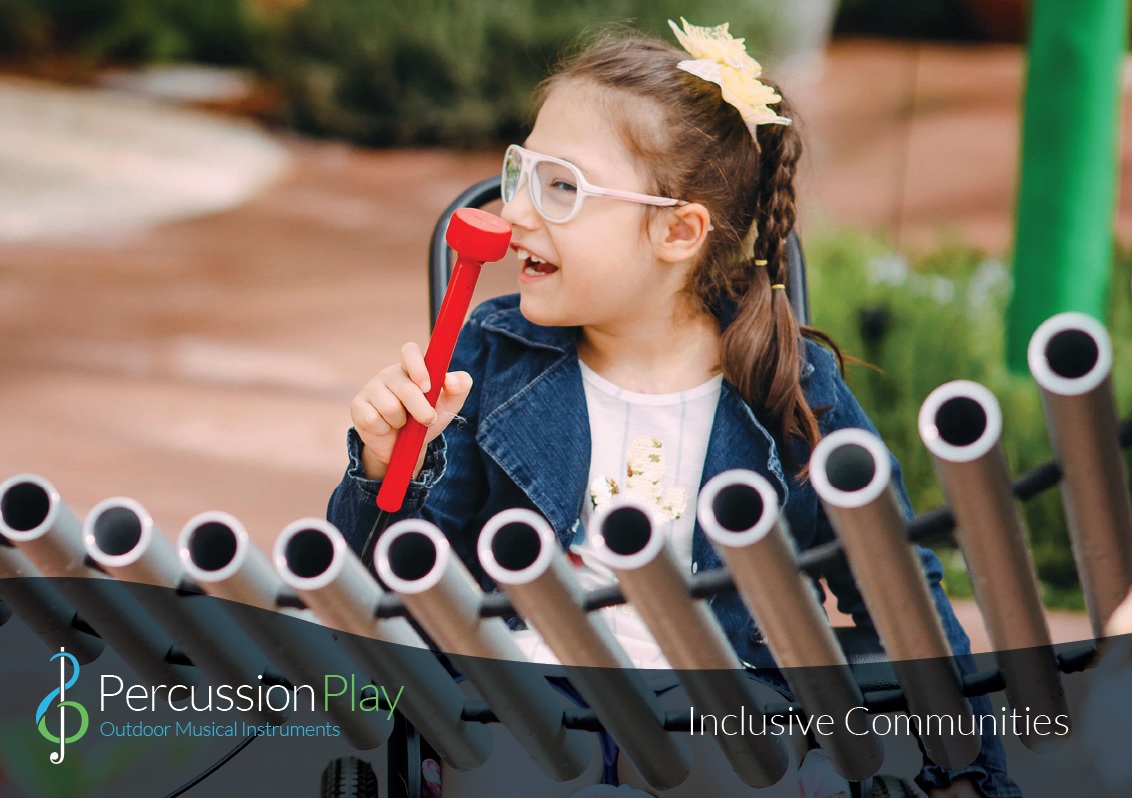Music gives everyone a voice, and making music together can build a harmonious, cooperative spirit of support and encouragement for us all.
Inclusion is about engagement and often the lack of opportunity to get involved can be as significant a barrier as the nature of a person’s disability. The creation of holistic accessible outdoor music spaces, where many of the barriers that prevent a person from accessing music (whatever they might be) can be removed, will allow all members of the community the opportunity to experience live music as both a performer and listener – building shared musical and play experiences and in turn an understanding that will only help inclusion to grow.
After all, that is exactly what inclusive communities should be about: creating opportunities for us to share experiences, learn together, and maybe most importantly to have great fun together!
Music can have a profound effect on anyone, but the rewards of exposing people within the disabled community to live music-making opportunities can be huge. Making music can provide a fun and non-threatening outlet for creative and emotional expression and through the medium of music, many essential life skills can be learned or developed. However, with a severe lack of accessible musical instruments for people with varied physical abilities, people with disabilities are often excluded from making music. We want to break down the barriers of ability in music and aim to make the outdoor musical instruments within our range accessible to as many people as possible.
1. The Duo
Individuals with autism spectrum disorder often find it difficult to look others in the eyes as they find eye contact uncomfortable or stressful. The shape and offset note layout of the Duo allows for close social interaction without forcing close physical proximity. Players can interact with each other in a safe space without the need for direct eye contact, offering the chance for players to explore and experience creativity non-verbally through a shared moment together.
2. Rainbow Sambas
The multi-sensory act of drumming has a unique blend of physical activity, coordination, and musicality. As a set of five, the colorful Rainbow Sambas allows a small group to drum together to help develop social skills. This collaborative and interactive process has a lot of benefits for all children, with or without disabilities. They will learn to share, listen, pay attention, take cues from each other, and take turns. The vibration of the drum lid will engage the tactile system of the player, however, perhaps the most obvious benefit is the ease of expression – an opportunity to drum out feelings without needing to talk about things they cannot or do not want to.
3. Papilio
The wide-span and suspended notes of the Papilio ensure wheelchair users can play and have equal amounts of creative fun, side-by-side with their peers, family, or therapist. Both the height and angle of the notes ensure maximum comfort for up to four players to interact, experiment with sound, and develop mobility skills.
4. Tubular Bells
Music is felt on a physical level by everyone – including people living with sensory impairment. When arranged in a horseshoe formation, the Tubular Bells create a wonderful surround-sound effect you can ‘feel’ with noticeable vibrations for anyone standing or seated in the middle of the shape. Players with sensory loss can use the vibration of the instrument to help them touch the sound they create which intensifies along with the level of movement and strength of the ‘strike’. Sound is vibration and vibration is tactile. You can ‘feel’ sound by touch and this combination of mobility and tactile stimulation, vibration, and music, make the Tubular Bells a powerful tool for cognitive and movement therapy.
5. Large Babel Drum
The easy-on-the-ear pentatonic scale used on our Babel Drum means you can play the calming, peaceful notes in any order to create a pleasing melody. Each note will seamlessly flow together in harmony, making it a great instrument and wonderful tool for finding inner peace, with their pleasant and relaxing sounds creating a calming restorative environment. Occupational therapists, music therapists, and child behavioral therapists find these drums to be beneficial in their practice. Playing them can help improve coordination, overcome physical difficulties, promote self-expression, and instill a greater level of confidence in the player’s abilities. Furthermore, their soothing sounds make them an excellent choice for children and adults with auditory processing difficulties.
—
There is no right or wrong in music, but the harmonic pentatonic scales used on most of our outdoor musical instruments allow the players to feel safe to experiment with self-expression. This leads to a sense of achievement, increased self-esteem, and confidence which can be transferred to other areas of their lives. Through playing the instruments, players can express their emotions, develop a sense of rhythm, support their physical development, develop communication skills, and benefit from auditory and tactile stimulation.





